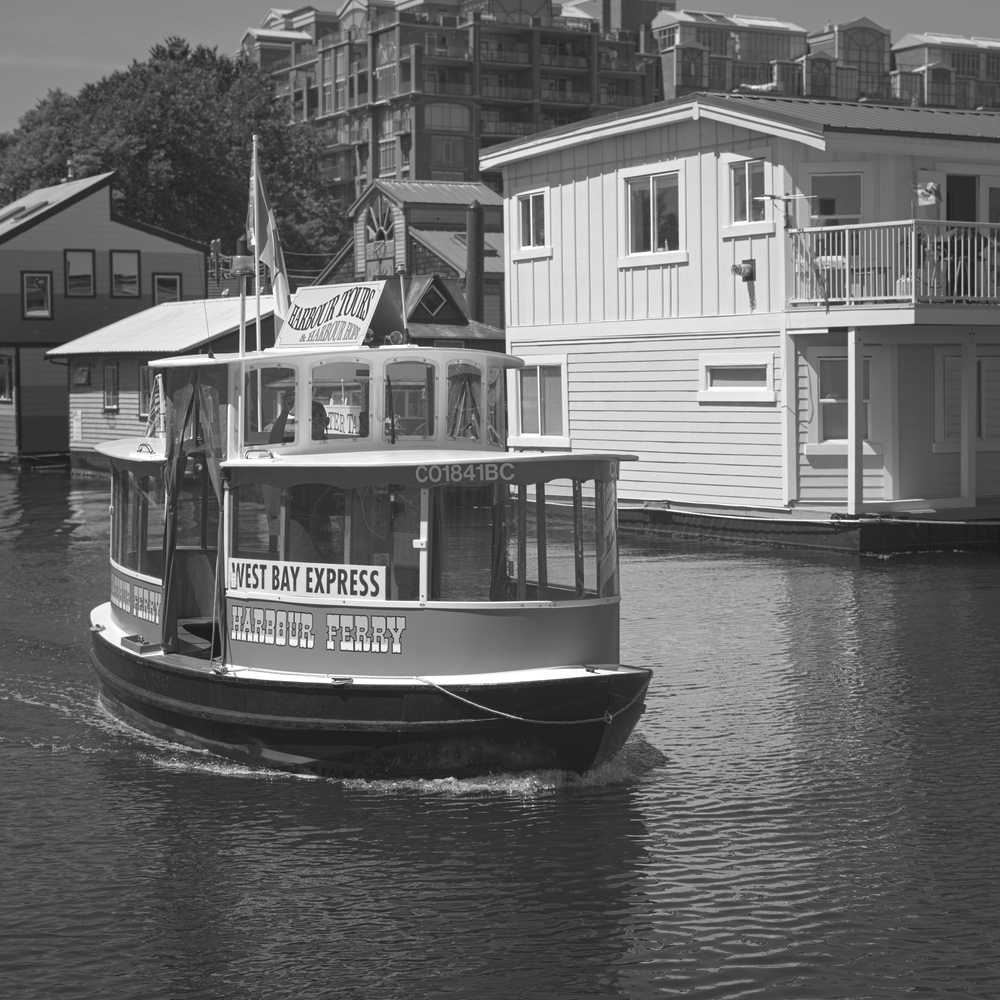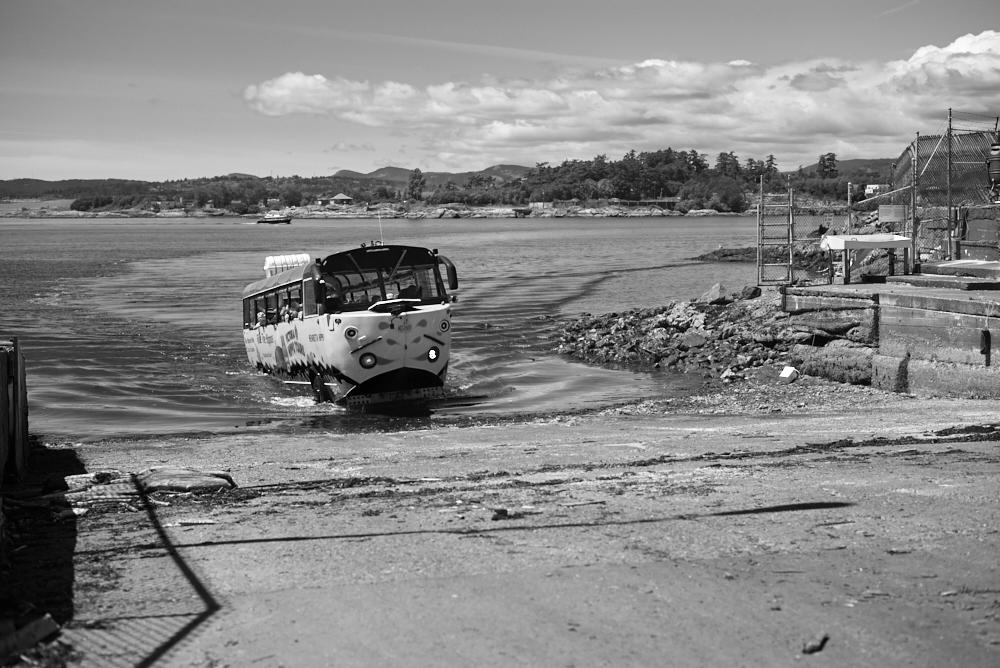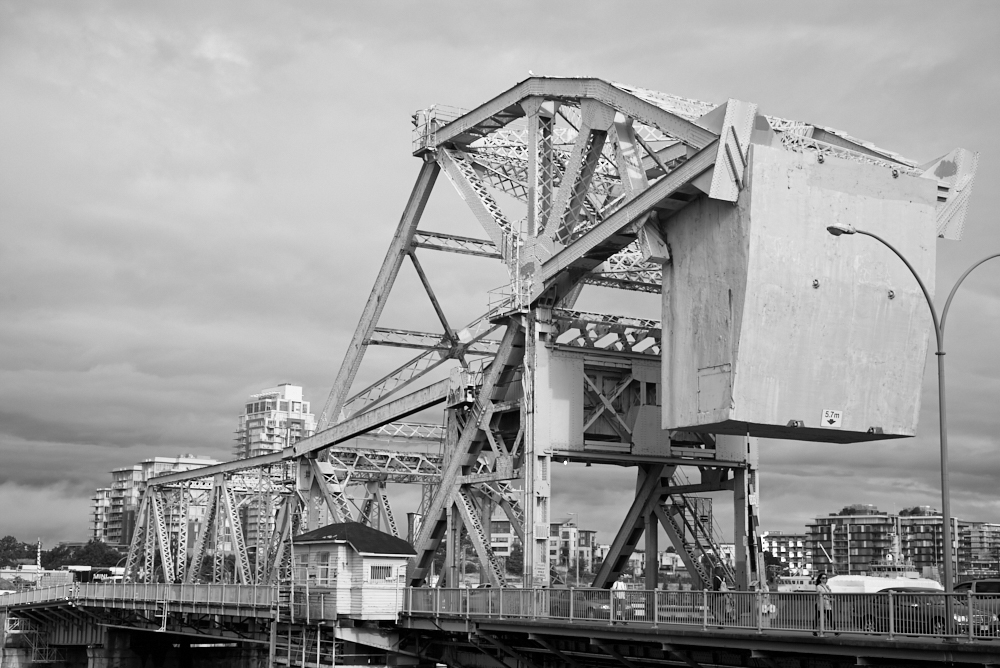The Salish Sojourn IV
Victoria, British Columbia

Pickle Boat
Victoria, the capital of the province of British Columbia, curls like a finger around its Inner Harbour, a body of water so heavily trafficked, that it would make a fine topic for a Richard Scarry book: Busy Harbour. Sixteen harbor taxis, known locally as "Pickle Boats," are constantly on the move. Their red maple leaf ensigns snap proudly in the breeze as they carry customers between fifteen ferry stations. Almost taller than long, the little yellow and green boats place six passengers forward, six aft, with a pilot riding in an elevated steering station in the middle.

Two DeHavilland Turbo Otters
Seaplanes — DeHavilland Canada DHC-3 Turbine Single Otters — use the gullet of water between Fisherman's Wharf and West Victoria as a runway, lifting passengers to remote destinations across the province. When the pickle boats have cleared the flight path, the pilots run the throttle in to the stops. The turbine engines growl, and the planes leap up on the step, floats hydroplaning across the waves as they rocket forward. A skip, a long hop, and they are away, growling out over the Strait of Juan de Fuca. Before their wake settles, you hear the drone of incoming traffic, and another Otter drops smoothly into the freshly-vacated space for a landing.
Adding to the mayhem are the commercial craft — the Victoria Clipper, a hydrofoil that carries passengers to Seattle in a little under three hours; fishing boats of every type, shape, and configuration; tug boats pushing barges — as well as non-motorized vessels: crew shells, rowing boats, and sail boats. There are even hybrid craft like the Victoria Hippo: half boat, half tour bus, dividing its time between land and sea.

The Victoria Hippo, making the transition from water to land
In short, it is a busy place.
We have found an apartment overlooking the Chinatown water ferry stop. Every few minutes a pickle boat pulls up, disgorges passengers, seats a new load, and then gives three toots of its horn before dashing back out into the stream. The pub across the street makes this a popular destination. A pickle boat with fourteen hens — women celebrating a bachelorette party — arrives at our dock and disgorges its load. The already inebriated ladies fall out of the boat, and then insist that the captain document the merriment with a camera phone shot of their successful landing: "we claim this land for inebriation!" A good sport, he obliges. The event captured for social media, the ladies stagger a bit as they get their sea legs, then tromp up the ramp toward the pub.
Looking downstream, we can see the Johnson Street Bridge, a decrepit, blue-paint peeling bascule bridge. For readers who are not au courant on bridge design, a bascule bridge is a swing bridge that employs a large counterweight to lift its center span, opening to allow boats to pass beneath.

The Johnson Street Bridge
In the evening, two tug boats straddle an empty sand barge, like collies shepherding a recalcitrant pig, and nudge it out into the middle of the Upper Harbour. Crew boats detour around the load, and even the pickle boats, with their superior maneuverability, keep an eye on it. As the tugboats light up their diesels and begin to shove the ungainly load slowly seaward, a siren sounds on the Johnson Street Bridge, undulating loudly. Pedestrians and bicyclists make a hurried dash across the span. Traffic barriers drop at each end, and then the large concrete counterweight is released, slowly dragging the bridge deck into the sky. The steel span groans higher, rising until, pointed nearly straight up, it creaks to a stop. The tugs dig into the saltwater, maneuvering their barge toward the open slot.
The Johnson Street Bridge was designed and built in 1924 by the Strauss Bascule company. This company, led by Joseph Strauss, would eventually build a more famous structure, the Golden Gate Bridge in San Francisco.
Unfortunately, the current bridge, having served faithfully for nearly a century, is about to become obsolete. A replacement bridge — concrete and steel, with lanes for pedestrians, bicyclists, and automobiles — is going in next to it. Scheduled for a grand opening in December 2017, the replacement will supplant Mr Strauss' work. I can't but help think, as I watch the tugboats threading the needle with their load, that one mistake in guidance, a fluke of current, would send the barge smashing into the concrete pillars of the new bridge, wiping it out and granting an extended lease on life for the venerable, older structure.
It doesn't happen. The new bridge is unscathed as tugs and barges vanish from sight.
The pickle boats quit running at 9:00 PM. One by one, they come dashing in from down harbor, give a little burst of engine to swing their sterns around, and bump neatly against the dock beneath our window. The captains tie them off, fore and aft, zip up a plastic liner to keep the rain out, and then head off into the night.

Pickle Boats buttoned-up for the night
By 10:00, all of the pickle boats sleep beneath our window. With the last light nearly drained from the western sky, the harbor rests and a silence falls over the water.
I think I am going to like Victoria.
If you are enjoying this series, why not subscribe to Richard's monthly newsletter, What's New in Old News? The Peripatetic Historian is on the road, roaming the world and compiling fresh adventures. Don't miss out. Click here to join the legions of above-average readers who have already subscribed.